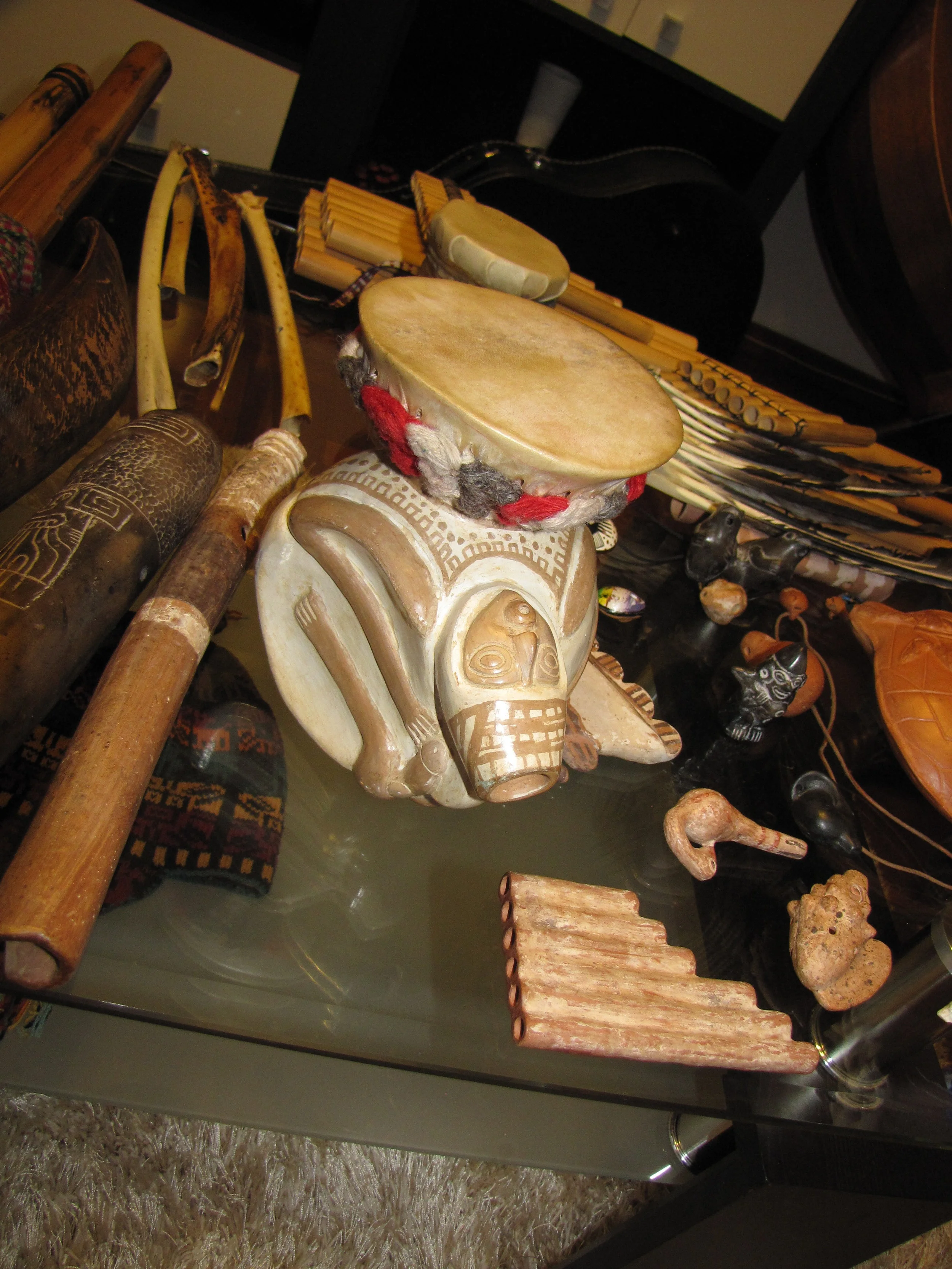Peru day 16, Sept 11 - Second Installment
Forgot to mention yesterday on the other memorable things about the figure of Our Lord of the Earthquakes. Each year important Cusco companies bid for the honor of supplying the guara for the figure, which by the way is Christ crucified with very dark brown skin due to the pollution from the burning of thousands of candles near the figure. The year, the honor was bestowed on PeruRail, so the PeruRail logo is large, front and center on the skirted figure. Oh, for the privilege of taking a picture of this. And, thankfully, the restoration of the Cathedral is being funded by the Peruvian national telephone company. I really expected when in the chapel of The Holy Family, to see Joseph handing Mary a cell phone, captioned, “Here, Dear, this one is for you.” But no, there is really no evidence that they are the $ behind the project.
At four in the afternoon, we were visited at our apartment by Tito Leon, a local architect and city planner whose avocation is Andean music. And what a collection he has and can he play and sing. We are swept away by his session. He took us back to the simplest instruments, various ocarinas, from tiny to mid size. These are instruments and works of art as most a decorated and they play lovely, simple music.
Then we moved various qenas (flutes) (Quechan should be an enabled language for Scrabble as many words contain “q” combined with any vowel, not limited to “u”.) These are made from a variety of materials: clay, bamboo, large bird feathers (traditionally Condor), producing a vast register of sound based on length. They are played like our piccolo or in some cases like our flute.
He then showed us the instrument we are most familiar with, the pipes or antara. Since these are easier to play than the quena, they are more frequently used and have become a “brand” for Peruvian music - fortunately or unfortunately. We see many men in traditional dress playing them, at restaurants, train stations, etc.
Then Tito played the waca-waca, whose name is a derivation of vaca, as it is curled instrument made from about 16 cow horns joined together in sequence to make a long spiral. Again he was able to produce remarkably varied tones from it, using lung power and holes on the bottom of the instrument. Sounded like a trumpet.
Next was percussion and Deb Quentel, did I think of you. Lots of chachas or hanging rattles made from hooves and seeds. Then drums from both clay and wood and bark with skin covers. He then work a chacha on his knee, drummed and played the pipes all at once and you had an Andean band of one man. Reminded me of cheap wedding where you hire an accordion player with a sideman, except his music was enchanting.
The very best were the stringed instruments made after the conquest by the Spaniards. The Indians took the Spanish mandolins and guitars and made them into the very special pachajahaki, or centipede. It has 16 or 20 strings, arranged in series of four over the fret board, with three out of four of the series having strings tuned an octave higher that the others in that series. So when you play, you create a minor symphony just by strumming, and even more variety of plucking. The sound transported us. We are surprised that this instrument hasn’t been “picked up” by the musical world outside Peru. The sound is amazing and very unique. We would like this to become the new symbol of Andean/Peruvian music.
For the finale, Tito played contemporary Peruvian music from the Andes and from the Coast (that would have featured the box, a percussion instrument from the blacks (10% of population of Peru) who live in rather isolated communities north and south of Lima. He has a wonderful voice, as well as being able to play all of these instruments.
Ocarina
Fortunately, we were able to purchase several disks he made with his friends. I would have recorded the session, but we are sans iPhone on this trip.
I finally steeled myself for a shower and did survive - it’s nice to have clean hair. And this morning, the 12th, we find that our heater is out of gas. Hope they don’t punish us for being pampered Americans and pop for a new can.
A beautiful clay drum and other instruments
Playing the pachajchaki




